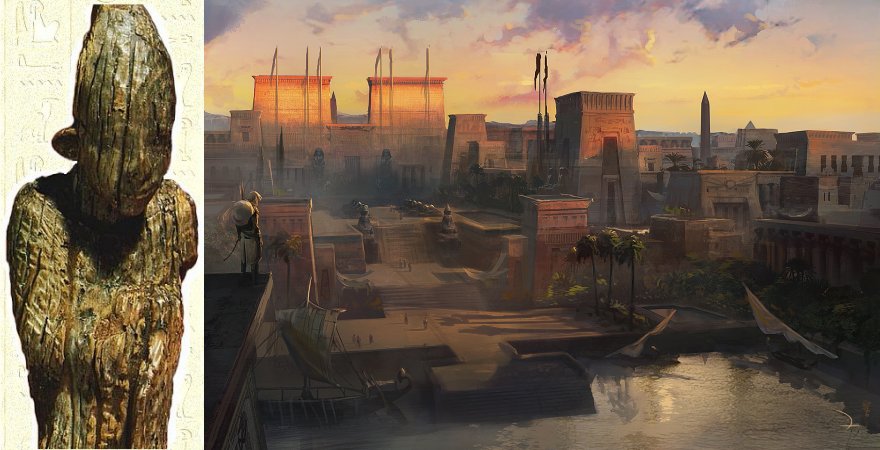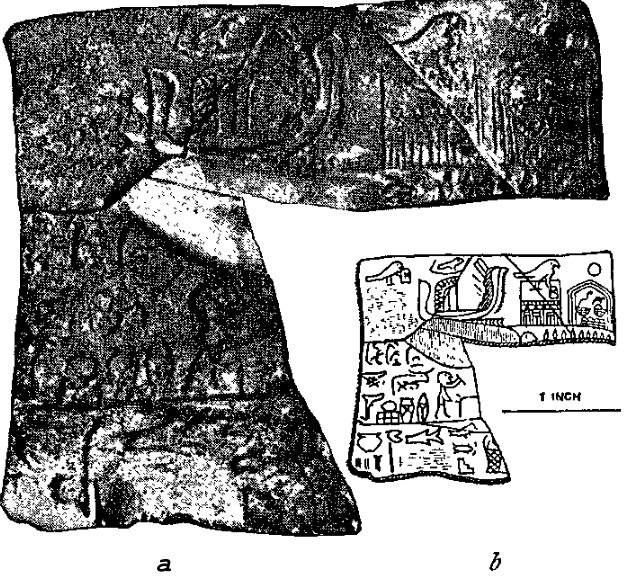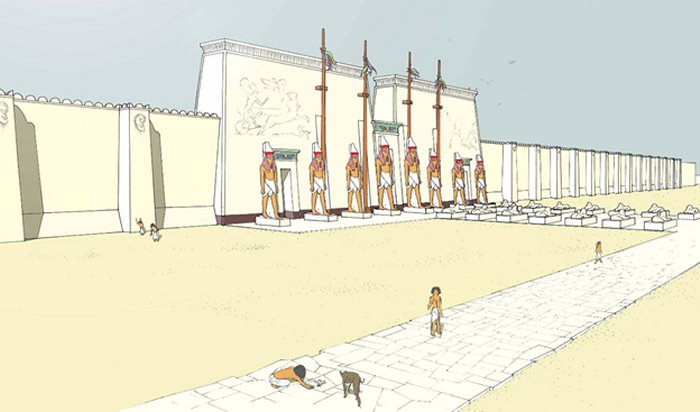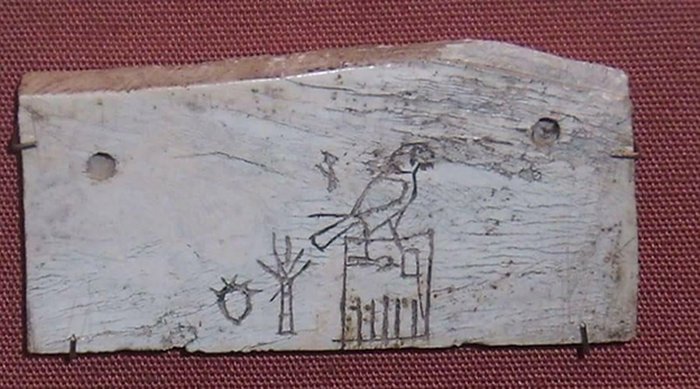Pharaoh Hor Aha – 1st Dynasty Ruler Of Ancient Egypt Who Founded The City Of Memphis And May Have Been The Legendary Menes
Thalia Lightbringer - AncientPages.com - Who was Hor-Aha? There are very few artifacts remaining from his time, but the ones which have been found provide tantalizing clues. Narmer is credited with being the first to wear the combined crowns of Upper and Lower Egypt, but Hor-Aha may have been the one who finished the work of uniting Egypt under one rule.
King Fighting Hawk
The kings of Egypt had several names. Hor-Aha was a "Horus name" (also called the "serekh name" because it is in an enclosure called "serekh" in Ancient Egyptian). It means "Fighting Hawk," or "Fighter" is written without the "Hor." The Horus name indicated that the kings of Egypt were the living embodiment of the sky god Horus.
Left: Statue of hor Aha - Credit: antikforever.com - Right: An artist's impression of Memphis, Egypt. (From the computer game Assassin's Creed Origins)
Aha reigned around 3000 BC, though the dates are not completely accurate and could be a century earlier or later. In the ancient king lists from the tombs of Den and Qaa he is recorded as the second ruler. These king lists show that Hor-Aha reigned after Narmer, who united the Two Lands (Upper and Lower Egypt).
Hor Aha was most likely the son of Narmer and his queen Neithhotep. The mastaba (bench) tomb of Neithhotep at Naqada is believed to have been constructed during Hor Aha's reign.
There has been some confusion regarding Narmer, Menes, and Aha. Some thought they were the same person, but an ivory figure from Neithhotep's tomb shows Narmer and Aha together. However, Aha may have been the legendary Menes. An ebony label found in Neithhotep's tomb shows that Aha used the Nebti Name Men ("established" or "enduring"). The Nebti name or "Two-Ladies Name" (for the Goddesses Nekhbet and Wadjet of Upper and Lower Egypt) symbolized that the king was the ruler of a unified Egypt and was next in importance after the Horus name.
An inscription bearing Hor-Aha's serekh together with a Nebti-name expressed with the game-board hieroglyph, which could be read mn, by Unknown - An illustration from the Encyclopaedia Biblica, a 1903 publication which is now in the public domain. - Credit: Public Domain
The unification of Egypt appears to have begun with Narmer's father (known as "Scorpion"), but it seems that Narmer was the first to wear the two crowns together. It is likely that Hor Aha had to solidify this unification with further campaigns, and evidence shows he traveled widely during his reign, even to the Delta. Therefore, the later legend of Menes could be a mixture of the acts of these three kings attributed to one figure.
According to the Egyptian priest, Manetho it was during Hor Aha's reign that Egyptians learned to worship the gods in the proper fashion and to live in a more civilized manner. He was known as a reconciler between the people of Upper and Lower Egypt. Arts and crafts also flourished during his reign.
Founder Of Cities And Shrines
Hor Aha is credited with founding the city of Memphis at a strategic spot. Memphis is called Men Nefer in Egyptian, which E.A. Wallis Budge says means "fair haven" and others say means "enduring and beautiful." The hieroglyphs can have several meanings depending on their context.
Herodotus says Aha built a dam south of the city to reclaim land to build on. Another name for the city was Ineb Hedj, "White Walled." Manetho describes this great city as being surrounded by a colossal wall of pearly limestone, with many temples and gigantic statues within. Manetho says Hor-Aha reigned in Memphis for sixty-two years. There Aha established a shrine to Ptah, the god of craftsmen and architects, and promoted his worship.
Artist's depiction of the western forecourt of the Great Temple of Ptah at Memphis, by Franck Monnier (Bakha) - Franck Monnier, Les forteresses égyptiennes. Du Prédynastique au Nouvel Empire, collection Connaissance de l'Égypte ancienne , Safran (éditions), Bruxelles, 2010, 978-2-87457-033-9, , CC BY-SA 3.0
Aha is said to have met his end when a hippopotamus attacked him during a hunting expedition. An ivory label from Neithhotep's tomb shows him celebrating a festival called "Receiving the South and the North," which seems to be an early version of the Heb Sed (Feast of the Tail). This could indicate a long reign because the Heb Sed was celebrated only after a king had ruled for thirty years.
A legend tells that Hor-Aha also founded the city in Upper Egypt known to the Greeks as Crocodilopolis, Per Sobek ("House of Sobek") in Egyptian. This was to thank the crocodile god Sobek because he was saved by a crocodile when attacked by wild dogs in the Faiyum, an oasis in Middle Egypt.
Manetho relates that Aha built a shrine to the goddess Neith at Sais. This is confirmed by an ivory label found in Hor Aha's tomb. A wooden label also shows the temple to Neith and indicates this expedition stopped at Buto, where the cult of the Apis bull became prominent. The bull in a pen shown on this label may be the earliest evidence of that cult. A seal of Aha was also found on an early shrine at Buto.
Foreign Relations
There is evidence found in tombs of nobles of the period that Aha went on a campaign to Nubia to put down some rebels there. He also had other foreign campaigns.
Egypt had peaceful trade with Palestine before Aha's reign, but it seems that he was more aggressive toward the people there, exploiting them and their resources. In any case, there is evidence of brisk trade and imports of coniferous woods, oils, and resin, including cedar oil.
Hor Aha's Tombs
Hor Aha has been credited with tombs constructed at Abydos and Saqqara, but he was buried at Abydos. The tombs at Saqqara where his seal was found were probably built for nobles from Aha's reign.
The tomb at Abydos was a grand one for the time, with five chambers below ground and twenty-seven storerooms above ground. The tomb was decorated to resemble a palace. A boat pit was found on the northern side of the tomb, which probably contained a wooden solar boat like the one found near the Great Pyramid.
Hor Aha was buried with servants or officials, all under the age of twenty-five, and seven young male lions. This practice is not seen in burials after the First Dynasty.
Near Hor Aha's tomb is the tomb of Benerib ("Sweet Heart"), thought to be his chief wife. However, Hor Aha's successor Djer was not born to Benerib. Djer was his son with another wife or concubine called Khenthap, listed on the Cairo Annal Stone.
Ivory label inscribed with the serekh of Hor-Aha and bearing the name of his wife Benerib, by Udimu (Own work), CC BY-SA 3.0
It seems that Hor-Aha was a good ruler who protected the people and encouraged craftsmanship, culture, and trade. Memphis, the city he founded, became a major hub of trade for a very long time. Hor Aha started a period of prosperity that Egypt enjoyed for another 800 years after his death.
Written by – Thalia Lightbringer – AncientPages.com Staff Writer
Copyright © AncientPages.com All rights reserved. This material may not be published, broadcast, rewritten or redistributed in whole or part without the express written permission of AncientPages.com
Expand for referencesReferences:
Kingship and the Gods: A Study of Ancient Near Eastern Religion as the Integration of Society & Nature, by Henri Frankfort, 1978, University of Chicago Press
The Story of Ancient Egypt, by George Rawlinson, M.A., 1887, G. P. Putnam's Sons
Legends Of The Gods: The Egyptian Texts, edited with Translations, by E.A. Wallis Budge, 1912, London
An Egyptian Hieroglyphic Dictionary (2 Volumes), by E.A. Wallis Budge, 1920, London
Ancient Egypt From the Records, by M. E. Monckton Jones, 1924, E. P. Dutton and Co., New York, NY
More From Ancient Pages
-
 Stolen Artifacts Returned To Pompeii – Believed To Be Cursed -They Brought Misfortunes To A Woman And Her Family
Artifacts | Oct 13, 2020
Stolen Artifacts Returned To Pompeii – Believed To Be Cursed -They Brought Misfortunes To A Woman And Her Family
Artifacts | Oct 13, 2020 -
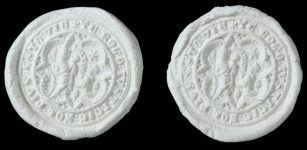 ‘Completely Unique’ Seal Matrix Found Near Norwich, UK
Archaeology | Dec 1, 2023
‘Completely Unique’ Seal Matrix Found Near Norwich, UK
Archaeology | Dec 1, 2023 -
 Cinnabar And Hematite Were Used In Early Teotihuacan Murals – INAH Researchers Say
Archaeology | Aug 5, 2020
Cinnabar And Hematite Were Used In Early Teotihuacan Murals – INAH Researchers Say
Archaeology | Aug 5, 2020 -
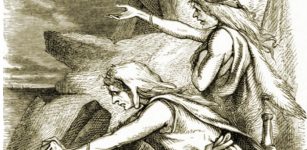 Fenja And Menja: Two Giant Sisters, Magical Grotte Mill And Why The Sea Is Salt
Featured Stories | Feb 15, 2020
Fenja And Menja: Two Giant Sisters, Magical Grotte Mill And Why The Sea Is Salt
Featured Stories | Feb 15, 2020 -
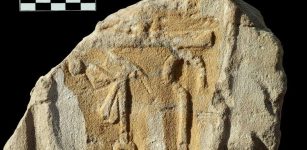 Gebel El Silsila: Remains Of Long-Lost New Kingdom Temple Found
Civilizations | May 19, 2015
Gebel El Silsila: Remains Of Long-Lost New Kingdom Temple Found
Civilizations | May 19, 2015 -
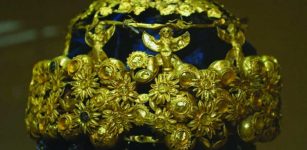 Long-Lost Mesopotamian Queen Hama Discovered By Student Just By Reading Books
Archaeology | Feb 14, 2019
Long-Lost Mesopotamian Queen Hama Discovered By Student Just By Reading Books
Archaeology | Feb 14, 2019 -
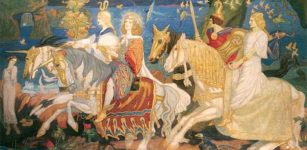 Tuatha De Danann: Mythical Race Of God-Like Beings With Supernatural Abilities In Celtic Mythology
Celtic Mythology | Feb 26, 2019
Tuatha De Danann: Mythical Race Of God-Like Beings With Supernatural Abilities In Celtic Mythology
Celtic Mythology | Feb 26, 2019 -
 Mysterious Mount Kailash: Secrets Of The Man-Made Pyramid And Entrance To The City Of The Gods
Ancient Mysteries | Oct 27, 2014
Mysterious Mount Kailash: Secrets Of The Man-Made Pyramid And Entrance To The City Of The Gods
Ancient Mysteries | Oct 27, 2014 -
 On This Day In History: Albert Einstein Publishes His General Theory Of Relativity – On Mar 20, 1916
News | Mar 20, 2017
On This Day In History: Albert Einstein Publishes His General Theory Of Relativity – On Mar 20, 1916
News | Mar 20, 2017 -
 Ancient Entrance Gate Found In Biblical City Of Bethsaida (Zer) Where Jesus Performed His Deeds Of Power
Archaeology | Jul 11, 2018
Ancient Entrance Gate Found In Biblical City Of Bethsaida (Zer) Where Jesus Performed His Deeds Of Power
Archaeology | Jul 11, 2018 -
 Grave Of Amazon Warrior Who Lived In The Kingdom Of Urartu Discovered In Armenia
Archaeology | Nov 28, 2019
Grave Of Amazon Warrior Who Lived In The Kingdom Of Urartu Discovered In Armenia
Archaeology | Nov 28, 2019 -
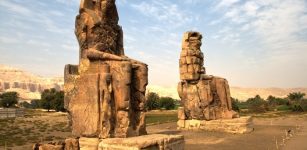 Colossi Of Memnon Guarded Temple Of Pharaoh Amenhotep III And Curious Sound Phenomenon
Featured Stories | Feb 2, 2021
Colossi Of Memnon Guarded Temple Of Pharaoh Amenhotep III And Curious Sound Phenomenon
Featured Stories | Feb 2, 2021 -
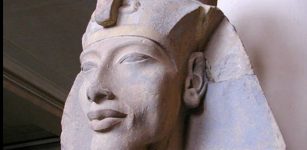 Akhenaten: Unorthodox Ruler Who Had Only One God
Featured Stories | Mar 28, 2017
Akhenaten: Unorthodox Ruler Who Had Only One God
Featured Stories | Mar 28, 2017 -
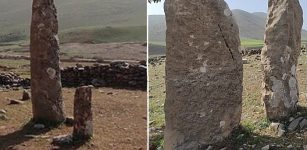 Unique Headstones Of Kela Mazin Cemetery In Kurdistan Are Probably 3,000 Years Old Or Much More
Archaeology | May 7, 2022
Unique Headstones Of Kela Mazin Cemetery In Kurdistan Are Probably 3,000 Years Old Or Much More
Archaeology | May 7, 2022 -
 Mysterious Jomsvikings: Fearless Scandinavian Warrior-Brotherhood
Featured Stories | Apr 26, 2016
Mysterious Jomsvikings: Fearless Scandinavian Warrior-Brotherhood
Featured Stories | Apr 26, 2016 -
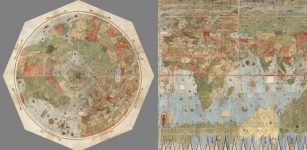 Unique Ancient Map Depicting The Earth As Seen From Space Restored Digitally
Archaeology | Dec 18, 2017
Unique Ancient Map Depicting The Earth As Seen From Space Restored Digitally
Archaeology | Dec 18, 2017 -
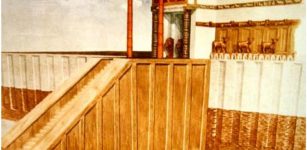 Beautiful Temple Dedicated To Ninhursag, Goddess Of Childbirth And Divine Protector Of Wild Animals
Civilizations | Jan 3, 2017
Beautiful Temple Dedicated To Ninhursag, Goddess Of Childbirth And Divine Protector Of Wild Animals
Civilizations | Jan 3, 2017 -
 Artificial Intelligence Reveals The Out Of Africa Expansion Is More Complex Than Previously Thought
Archaeology | Oct 18, 2021
Artificial Intelligence Reveals The Out Of Africa Expansion Is More Complex Than Previously Thought
Archaeology | Oct 18, 2021 -
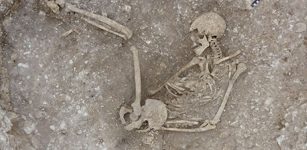 Unusual Iron Age Cemetery Discovered In Dorset, UK
Archaeology | Jul 11, 2022
Unusual Iron Age Cemetery Discovered In Dorset, UK
Archaeology | Jul 11, 2022 -
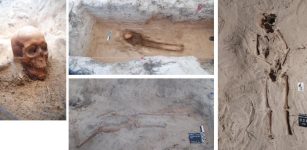 Silent Witnesses: Further Dark Secrets Of Batavia Shipwreck – Uncovered
Archaeology | May 11, 2023
Silent Witnesses: Further Dark Secrets Of Batavia Shipwreck – Uncovered
Archaeology | May 11, 2023

